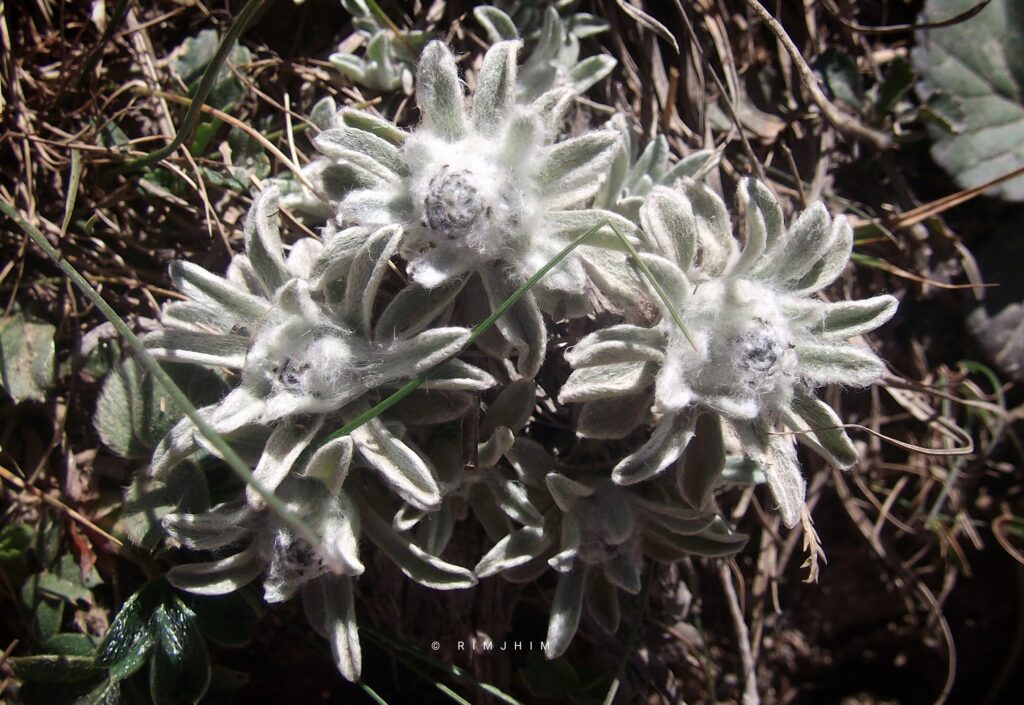Leontopodium nanum.
Asteraceae (Sunflower family)
Tiny Edelweiss is a stemless, densely tufted, woolly, perennial herb, 3-7 cm high, densely covered with brown scarious old leaf bases with rosettes of sterile leaves. Stolons are usually present, up to 10 cm long, bearing scattered modified scarious leaf blades. Leaves are spreading, linear lanceshaped, inverted-lanceshaped or spoon-shaped, woolly on both surfaces, 1.25-2.5 x 0.2-0.5 cm. Flower-heads are solitary or 3-5, stalkless amongst the leaves 7-13 mm in diameter predominantly female or male. Inflorescence bracts not forming a star-like structure, similar to the other leaves in size texture and indumentum. Phyllaries are 2-3 seriate, linear lanceolate, 4-6 mm long, margin and the apex of the phyllaries dark brown. Female florets filiform. Corolla c. 5 mm long, 4-lobed. Cypselas brownish sparsely covered with minute hairs, about 1 mm long. Pappus setae of the male florets thin, often totally barbellate; pappus of the female not being barbellate or dilated at the tip, 8-9 mm long. Tiny Edelweiss is found in Afghanistan, Pamir, Himalayas, Tibet, W China, at altitudes of 2300-4900 m. Flowering: July-October.

Leave a Reply